You’ve probably seen cross-eyed cats in your life, and after marveling at their adorable expressions, wondered why they have crossed eyes. The condition that causes eyes to be continually crossed has a medical name: strabismus.
Strabismus usually doesn’t impact a cat’s quality of life and isn’t considered a problem in cats that are born that way, but if a cat suddenly develops strabismus later in life, it could indicate an underlying problem with the muscles that move the eye, or the nerves or the part of the brain that coordinates the movement of those eye muscles.
Read on to learn everything you need to know about strabismus in cats.
What Is Strabismus In Cats?
Strabismus is a common eye condition in cats that causes the eyes to be out of alignment with each other, resulting in a cross-eyed appearance. Small muscles control eye movement up and down, and side to side.
When an eye muscle is too short or too long, or if the nerves or part of the brain that controls the eye muscles are damaged, then the eyes move in abnormal directions, causing a cat to look cross-eyed.
Strabismus can affect the ability of a cat to focus properly, and may negatively impact that cat’s ability to judge depth properly. Strabismus does not cause blindness, and most cross-eyed cats born with strabismus adjust well to their condition and live completely normal, happy lives. Cats that develop strabismus suddenly as adults often have other underlying conditions that need to be addressed.
How Common Is Strabismus In Cats?
Strabismus is common in some breeds of cats, including Asian breeds like Siamese cats. In fact, many Siamese cats are cross-eyed because of congenital strabismus.
The most common type of congenital strabismus seen in Siamese cats and other Asian breeds is convergent strabismus, where the muscle on the inside corner of the eyes is too short, and pulls the eyeball toward the nose, giving the cross-eyed appearance. Divergent strabismus happens when the muscle on the outside of the eye is too short and pulls the eye(s) toward the side of the face.
What Causes Strabismus In Cats?
Strabismus can either be congenital, meaning the cat is born with it, or it can develop secondary to other conditions that affect the coordination of the eye muscles.
Most cats that have strabismus as kittens are born with the condition and inherited it from their parents. This is most common in Siamese cats, Himalayan cats, and Persians.
If a cat suddenly develops strabismus as an adult, then it is often a more serious condition that needs veterinary attention. Sudden onset of strabismus in an adult cat can signify a problem with the muscles that move the eyes, the nerves that supply those muscles, or the part of the brain that controls those muscles.
Viral, bacterial, or fungal infections can cause strabismus. Trauma, nerve damage, stroke, cancer, hydrocephalus (water on the brain), and even inner ear disease can cause strabismus. Strabismus that is due to a secondary condition is usually accompanied by additional signs of sickness in cats.
What Are The Signs Of Strabismus In Cats?
Strabismus in cats may be a congenital condition or develop as a result of health conditions later in life.
The most common sign of strabismus in cats is that the cat looks cross-eyed and is otherwise normal. Some cats may have difficulty judging distances when jumping, or they can’t see their food properly in a bowl, but they usually adjust their lives to their disability and do just fine.
The story is a little bit different for adult cats that suddenly develop strabismus. If you notice that one or both of your cat’s eyes are suddenly in an abnormal position, or if you notice the eyes moving in an uncoordinated fashion, or if your cat is acting sick in any way, seek veterinary attention as soon as possible.
Additional signs that might be associated with strabismus that indicate a more serious underlying condition include:
- Rapid eye movement side to side, up and down, or in circles (this is known as nystagmus)
- Pupils are different sizes, or don’t constrict when exposed to light
- Droopy eyelid
- Bulging eye
- Head tilt to one side
- Circling or falling to one side
- Seizures
- Weak and/or tired
- Not eating
- Vomiting
- Fever
If any of these signs are noticed, they are indications of a more serious condition. Seek veterinary care as soon as possible.
How Is Strabismus In Cats Diagnosed?
Your veterinarian will conduct a complete physical and ophthalmic exam. An ophthalmic exam consists of light reflex testing, eye pressure testing, and other eye tests, including Schirmer tear tests and eye staining. Your vet may also conduct a neurological examination, which consists of testing cranial nerve reflexes, leg reflexes, testing balance, watching your cat walk, and checking your cat’s mental state.
If your vet suspects that the strabismus is congenital and not impacting your cat’s health or wellness in any way, then that is all that will need to be done. If your vet suspects that the strabismus is due to another underlying condition, then additional tests will be ordered.
These can include bloodwork, testing for viral diseases, imaging studies, or referral to a veterinary ophthalmologist, neurologist, or internal medicine specialist.
Is Strabismus In Cats Treatable?
With the correct treatment, some cases of strabismus in cats can be resolved. When strabismus is genetically-caused, it cannot be treated.
If a cat develops strabismus that is not due to genetics, then both the strabismus and the underlying condition can and should be treated.
Strabismus is often corrected with surgery.
Under general anesthesia, a surgeon can correct abnormalities in affected eye muscles to realign the eyes. Surgery can also be used to drain abscesses behind the eye causing by bite wounds. If strabismus is caused by a tumor, then surgery and often radiation therapy can be used to treat cancer. In some cases, removal of the whole eye may be necessary to keep it from spreading.
It may also be treated with medications.
Medications, such as antibiotics, may also be prescribed to help treat strabismus in cats with abscesses, meningitis, or inner ear infections that affect the vestibular system in the brain.
If your cat has had eye surgery to correct strabismus, be sure to follow all at-home instructions to give your cat the best chance at a good recovery and return to normal function. Keep a cone on your cat to prevent trauma to the surgical site, give all medications as prescribed, take your cat in for recommended rechecks and suture removal, and keep your cat indoors so you can monitor your cat’s recovery.
Physical therapy is also available after surgery or for cats that aren’t good candidates for surgery.
The goal of physical therapy is to strengthen eye muscles and coordinate eye movement and includes daily, fun eye exercises for your cat.
If your cat has strabismus and vertigo from a vestibular disease that cannot be treated, then you may need to prevent your cat from climbing up on high furniture to prevent injury from falling.
While strabismus in cats isn’t usually a major issue, it is still important to get your cross-eyed cats checked out by the vet, especially if things suddenly change. In addition, keeping your cat indoors and/or supervising your cat outdoors can help reduce strabismus related to trauma or infection.
Frequently Asked Questions
Do kittens grow out of being cross eyed?
Not all kittens are cross-eyed. Some are because their ocular muscles are not strong enough to control their eyes, but these kittens will grow out of their crossed eyes. Other kittens, especially oriental breeds like Siamese, Persian, and Himalayan cats, are cross-eyed their whole lives due to a hereditary condition. These kittens usually live and normal life, despite being cross-eyed.
What is strabismus in cats?
Strabismus is an eye condition seen in cats that causes the eyes to be out of alignment with each other, and results in a cross-eyed appearance. Small muscles control eye movement up and down, and side to side. When an eye muscle is too short or too long, or if the nerves or part of the brain that controls the eye muscles are damaged, then the eyes move in abnormal directions, causing a cat to look cross-eyed.
Are Ragdoll cats cross eyed?
Any cat can be cross-eyed. While Ragdoll cats can be cross-eyed, it is not more common in Ragdoll cats than any other breed.
Why are Siamese cats cross eyed?
Siamese cats are cross-eyed due to a genetic condition. In the past, it was desirable to have a cross-eyed Siamese cat, so breeders bred cats for this trait. Nowadays, we know that it is not beneficial to the cats to be cross-eyed, and cat breeders no longer select for this trait.
Why is my cat cross eyed?
Your cat is cross-eyed due to a condition called strabismus, which affects the muscles that control the movement of the eyeball. Some cats are born with this condition and do not have any problems with it, other cats develop it secondary to other problems, such as infections or trauma, and need the attention of a veterinarian.
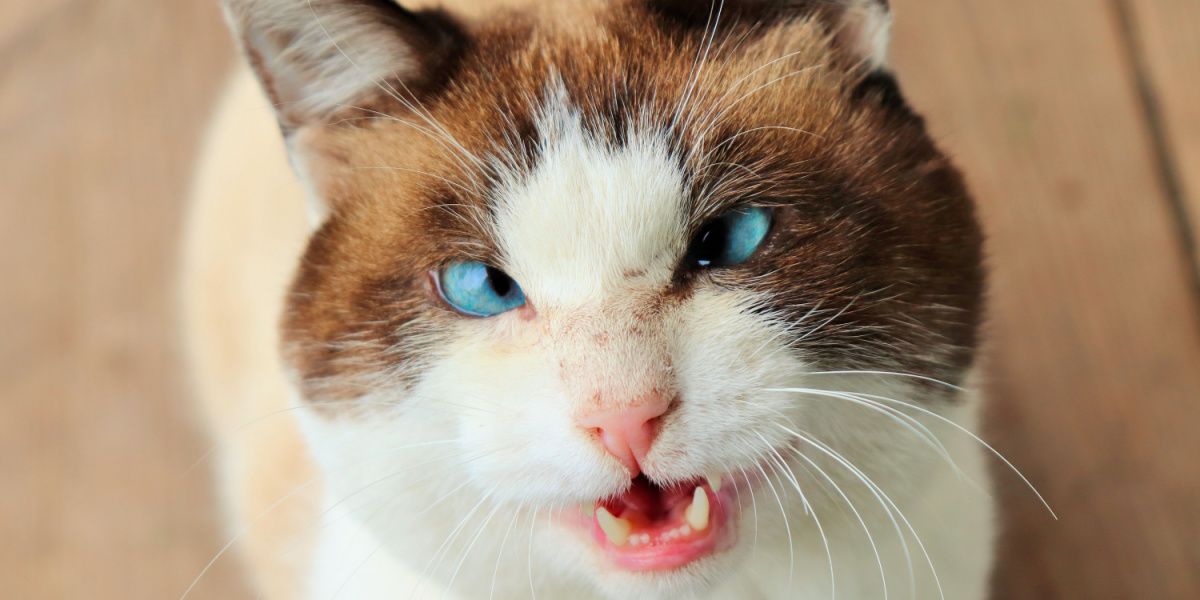
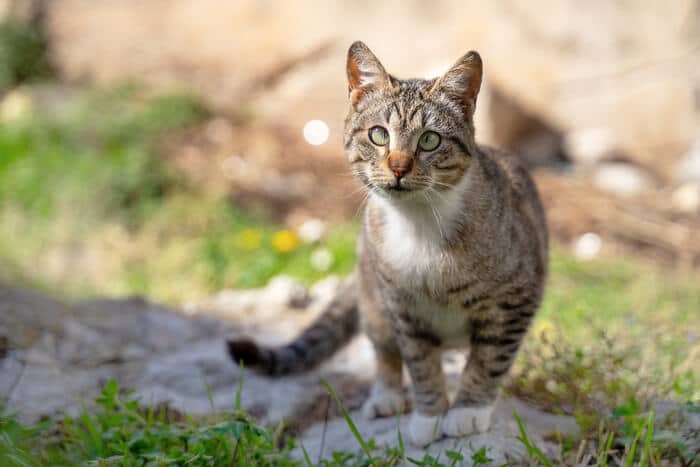
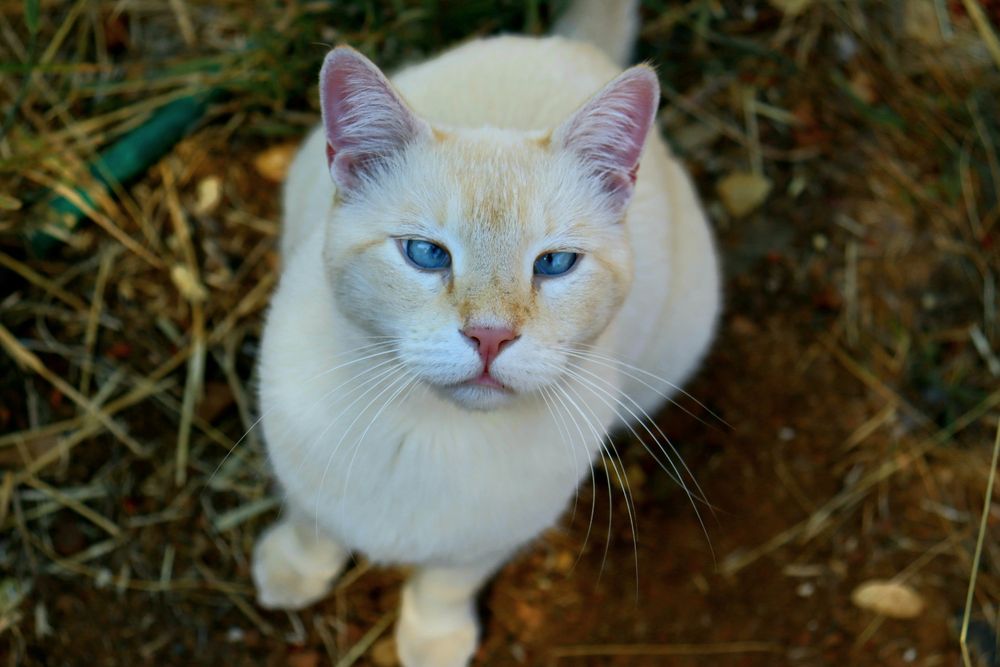


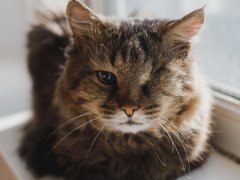
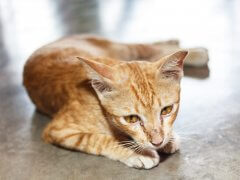


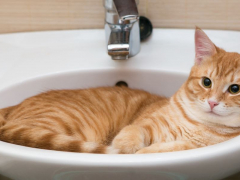

My cats eyes. He has like a membrane that sometimes covers half his eyes. What causes this.
Hi Joyce, what you’re describing sounds like the third eyelid. This is a normal structure in your cat’s eye, and it’s normally used like an eyelid to clear and lubricate the eyes. You can see a photo of the third eyelid here. It’s normal for this membrane to flash across your cat’s eye, but if it is showing up for extended periods of time, it could be a sign of illness. Hope this helps!
Our cat Lily is very healthy and then just all of a sudden her eyes started pointing outward. Please help me with this. I am scared to death that somethingserious is wrong.
Hi Donna, thanks for commenting, and I apologize for taking so long to get back to you! The best advice I can give you is to see a veterinarian. Wishing you and your kitty Lily all the best. 🙂
My Siamese has been cross eyed since birth, she is now 4 yrs old and is not able to focus on moving objects directly in front of her. I thought she was going blind. She is able to navigate the house without any problems. Is this normal for a cat with this condition?
Hello Alan, to my understanding, strabismus doesn’t typically progress that much over time, and after four years, it doesn’t seem typical for that lack of focus to suddenly appear. However, I’m not a veterinarian, and I would recommend talking with a vet to determine what’s going on.
My kitty Selina Kyle was super cross-eyed until about 10 months and now she is only mildly cross-eyed. Makes me a little sad because her derpy eyes were heart melting, but she’s still perfect and precious. I’m glad to know that her crossed eyes weren’t impacting her vision too much
I am looking for a cross eyed cat. Please help.
Hello there Cindy, we would not recommend looking for a cat who has been intentionally bred to have cross eyes, nor would we encourage you to seek out a cat with this condition. If you can find one through your local rescue or community, that would be great.